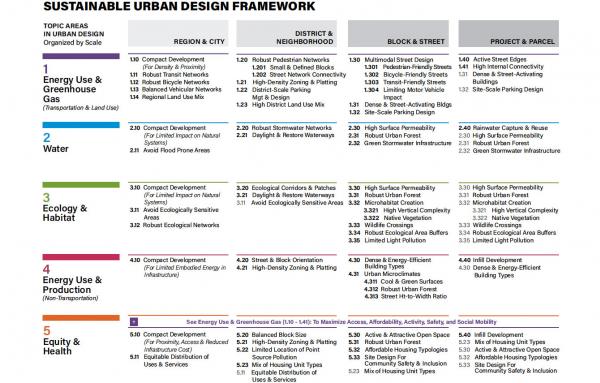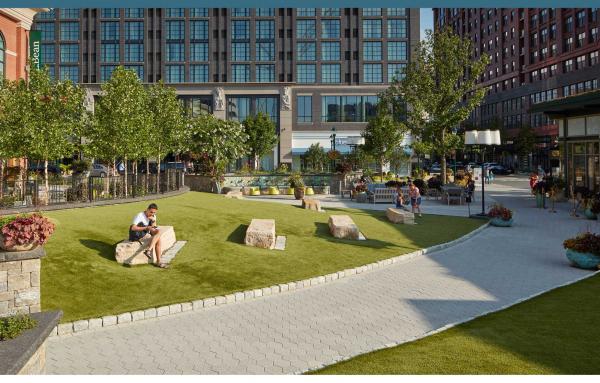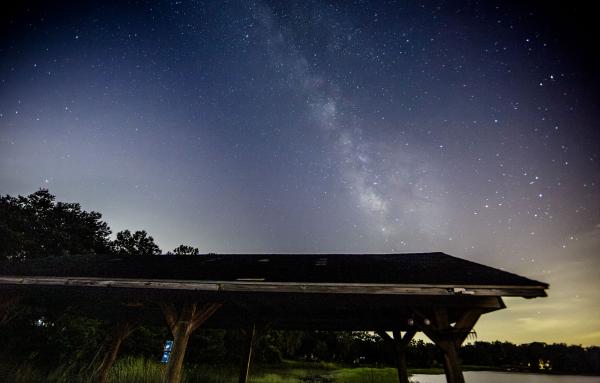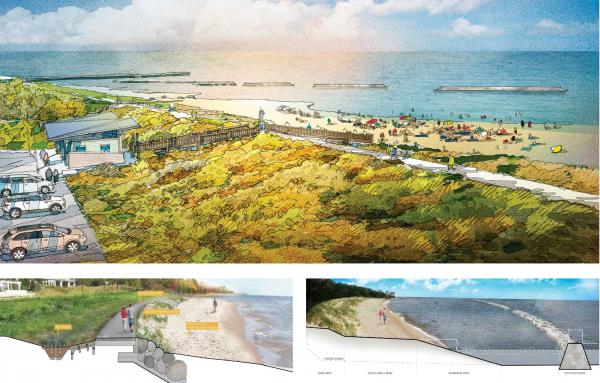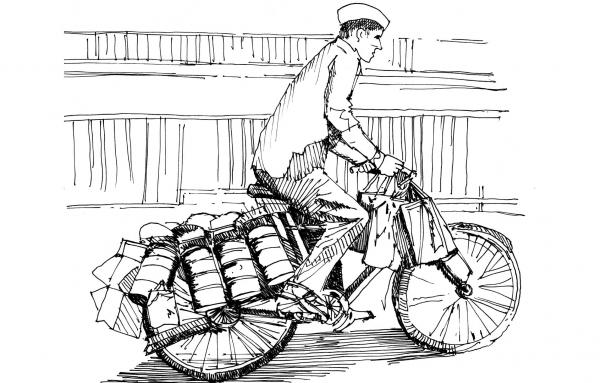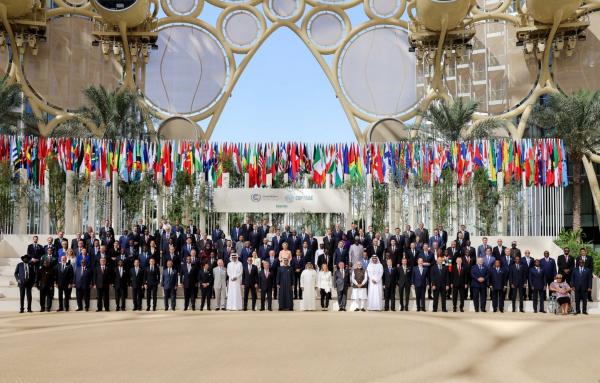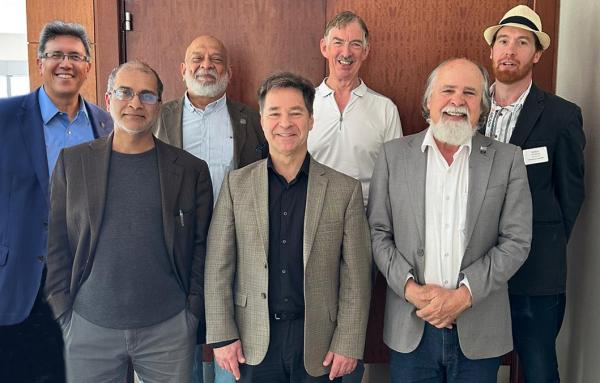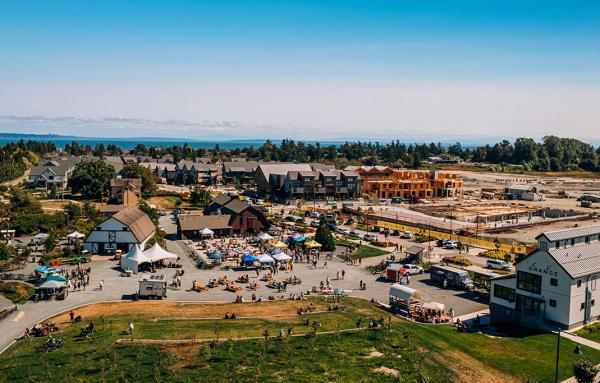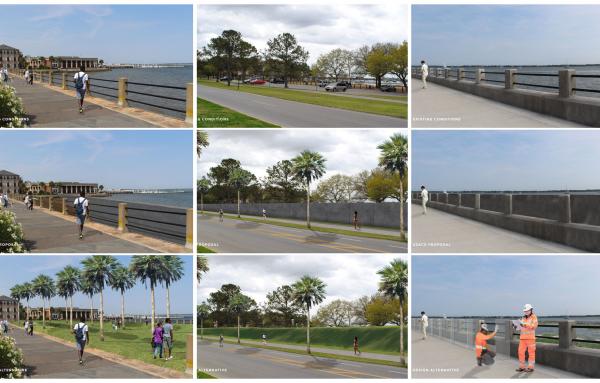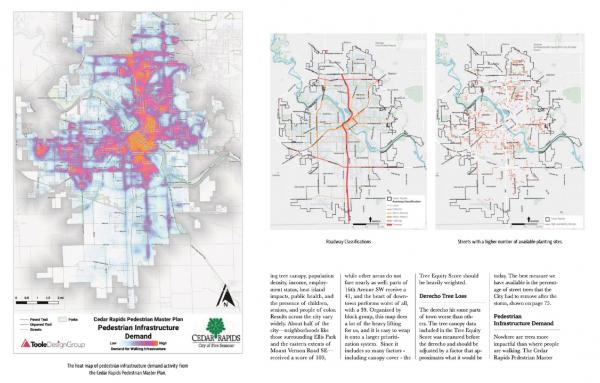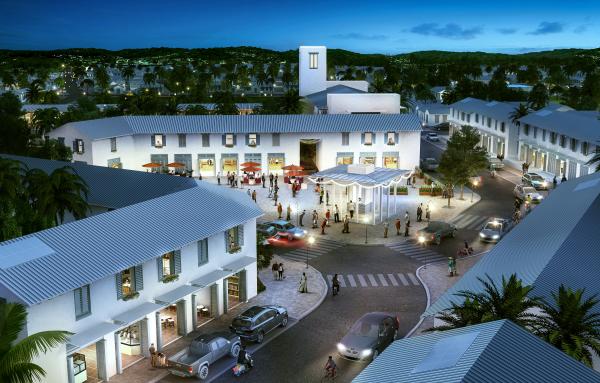Sustainability
Graduate student housing in Ithaca, New York, employs climate-friendly urbanism while meeting aggressive greenhouse gas reduction goals.
Like a periodic table of urbanism, the Sustainable Urban Design Framework provides a comprehensive view of the relationships between policies and urban forms at all scales. The framework is the basis for a new Sustainable Urban Design Handbook.
Pike and Rose is a new transit-oriented downtown in Montgomery County, Maryland, with a botanical public realm.
Groveland, Florida, has adopted a Dark Sky Lighting ordinance that preserves views of the Milky Way, saves energy, and enhances streetscapes.
Just Imagine SWLA is a long-term resilience plan for Calcasieu and Cameron parishes in Louisiana. The Community Foundation Southwest Louisiana and Urban Design Associates won a 2024 CNU Charter Award in The Region: Metropolis, City, and Town...
The traditional, low-tech system of delivering lunches in India's largest city is an inspirational model to sustainably reduce carbon emissions.
Sustainable urban design, policy advocacy, and citizen engagement are increasingly important to transform global climate goals into local realities after the UN Climate Change Conference.
Team 11, named after a UN sustainable development goal, wants CNU members to have a more significant impact worldwide to address climate change and other issues. The group is looking to sponsor a pilot project in Ukraine.
A bold vision of Agricultural Urbanism is now taking shape in British Columbia, 15 years after it was planned at the peak of the Great Recession.
The South Carolina city is pushing back against the US Army Corps of Engineers, who propose a perimeter wall to defend against storm surge. Charleston envisions a levy and range of public spaces in a Civic Design Opportunities Report.
ReLeaf Cedar Rapids is a plan to restore the Iowa city’s decimated tree canopy, with a focus on equity and placemaking. Speck & Associates and Confluence won a CNU 2023 Charter Award in the Region: Metropolis, City, and Town category.
The Higher Ground Initiative in Nauru is a plan for a Pacific island nation that is threatened by sea level rise. Metrocology and CIVIC/URBAN won a Merit Award in The Region: Metropolis, City, and Town category of the 2023 Charter Awards.

